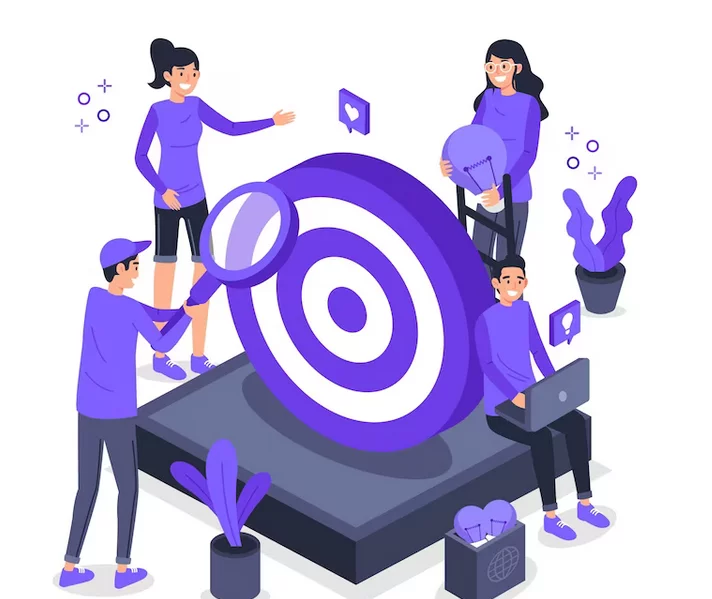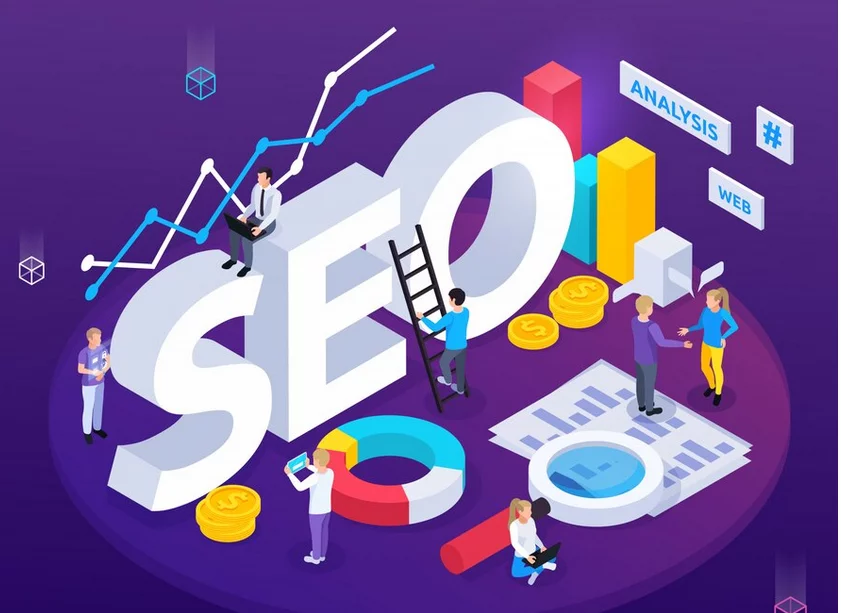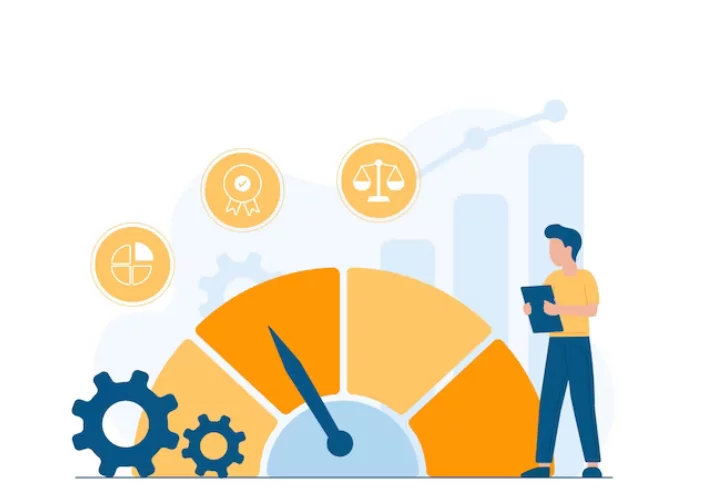In today’s digital landscape, the success of a business is significantly influenced by its online presence. A well-designed and engaging website serves as a cornerstone for attracting, retaining, and converting visitors into customers. As we delve into 2023, the dynamics of website engagement have evolved, demanding a nuanced approach that caters to the ever-changing preferences of users.
Statistical Insights:
- 87% of consumers begin their product searches online. (Statista)
- 94% of first impressions are related to a website’s design. (NN Group)
- 88% of online consumers are less likely to return to a site after a bad experience. (SWEOR)
With the digital landscape more competitive than ever, the importance of employing effective strategies to captivate and retain visitors cannot be overstated.
Strategies to Ensure Traffic to Your Website:
1. Understanding the target audience:

Understanding your target audience is pivotal for effective communication and business success. When you tailor your messages to specific groups, it yields multiple benefits, such as reducing acquisition costs, enhancing website design, and even positively impacting SEO through keyword alignment.
Tools for Audience Research:
- Engaging Customers: Surveys, feedback forms, and direct communication help gather valuable insights. Tools like SurveyMonkey or Google Forms simplify this process.
- Audience Insight Tools: Utilize platforms like Google Analytics and Facebook Audience Insights to gather demographic, behavioral, and interest-based data.
- Exploring Methods: Diving into methodologies outlined in comprehensive guides like Neil Patel’s Audience Analysis provides a structured approach to understanding and segmenting your audience.
2. Match user intent with targeted pages

Matching user intent with targeted pages is crucial for a seamless user experience and effective search engine optimization.
a. Customized Content for User Stages: Crafting content that aligns with different user intents or stages is vital for a tailored experience:
b. Clarity in Messaging: Each page should cater to a specific user intent or stage in their journey. For instance, a landing page should align with a user’s initial query, offering concise and relevant information.
c. Meeting User Expectations: Understanding the user’s purpose when they land on a page is key. Ensure that the content directly addresses their needs, answering their questions or providing solutions.
d. Navigation Simplification: Clear messaging and focused content streamline navigation, making it easier for users to find what they’re looking for without confusion.
Keyword Analysis Tools:
Utilizing tools for effective keyword analysis ensures content relevance and alignment with user queries:
- SEO Keyword Research: Tools like Morningscore’s Keyword Research Tool aid in identifying relevant keywords and phrases by analyzing search volumes, competition, and trends.
- Aligning Content: Once keywords are identified, integrating them naturally into your content helps search engines understand the page’s relevance to user queries.
- Optimizing User Search Queries: Understanding the phrases and terms users employ while searching allows for tailoring content to match those queries effectively. This optimization enhances the chances of content being discovered by the right audience.
3. Draft Skimmable Content:

Crafting skimmable content significantly enhances online readability and user engagement. Here’s a comprehensive guide on leveraging headlines effectively:
Crafting Skimmable Content involves breaking down information for easier consumption:
- Using clear headings (H-tags) divides content into digestible sections, aiding users in navigating quickly to specific information. This practice ensures that readers can locate relevant sections effortlessly, enhancing their overall reading experience.
- Moreover, these clear headings not only improve readability but also assist search engines in understanding content structure and relevance. By aiding SEO, they contribute to better visibility in search results, attracting more organic traffic.
- Skimmable content plays a crucial role in user engagement and retention. It allows users to scan for pertinent information swiftly, thereby encouraging them to stay longer on your page. This engagement ultimately reduces bounce rates, signifying that users are finding value in the content.
Content Organization Tools:
Various tools and platforms facilitate the creation of well-organized content:
- Content Editors and CMS Platforms: Platforms like WordPress, Drupal, Medium, or Google Docs offer formatting options using H-tags. Utilizing these features ensures proper heading structures, aiding content organization. WordPress even provides a formatting guide for better comprehension.
- SEO Plugins and Tools: SEO plugins such as Yoast SEO and tools like SEMrush Writing Assistant offer insights into optimizing headings for improved SEO performance. They provide guidance on structuring headings effectively to enhance visibility in search results.
- Accessibility Consideration: Beyond aiding users in content navigation, clear headings significantly improve accessibility. They benefit users relying on screen readers by providing a clear content hierarchy, making content more accessible to all users.
4. Measure the technique for SEO-friendliness

Ensuring your website’s technical aspects align with SEO standards is vital for its visibility and ranking on search engines. Here’s a detailed breakdown on measuring and enhancing your website’s technical SEO:
- SEO Checking Tools:
Utilize tools like SEMRush, or Ahrefs for comprehensive website audits. These tools scan your site for technical issues such as broken links, site speed, mobile-friendliness, and overall SEO health. They offer insights into areas needing improvement, including meta tags, header structure, URL optimization, image optimization, and schema markup. Regularly conducting these audits helps in tracking changes, addressing new issues, and ensuring your website maintains its optimal health over time.
- Technical SEO Optimization Guides:>
Explore platforms like Google’s Search Console Help or SEO blogs like Moz’s Technical SEO Guide for valuable insights into technical optimization. These guides delve into site structure, crawling, indexing, and technical best practices. They provide step-by-step instructions to implement technical SEO improvements, including optimizing robots.txt, fixing broken links, improving site speed, implementing HTTPS, and ensuring mobile responsiveness. Staying updated with these guides is crucial as technical SEO strategies evolve with search engine algorithm updates. Continuously updating your knowledge and strategies ensures alignment with current best practices.
5. Ensure that your website passes the 5-second test:

Capturing users’ attention within the first five seconds is crucial for engagement and retention. Here’s a comprehensive guide on optimizing the “5-second test” to enhance your website’s impact:
- User Understanding Evaluation:
Platforms like Userbrain facilitate qualitative and quantitative tests where participants review your website, providing feedback within a brief period. These evaluations gauge users’ initial impressions, understanding, and ease of navigation within those crucial first moments.
Quantitative analysis involves measuring data like bounce rates, time spent on page, and click-through rates to assess user engagement during those initial seconds. Additionally, tools like Hotjar or Crazy Egg offer heatmaps and click tracking, revealing user focus and interactions within the first few seconds.
- Engagement Evaluation Strategies:
Conducting user interviews, surveys, or focus groups helps gather qualitative insights into users’ initial experiences and perceptions of your site’s clarity and purpose. Analyzing user behavior through tools like Google Analytics provides crucial insights into how users interact with your site during those critical first seconds. Reports from Google Analytics, such as Behavior Flow or Site Content, reveal entry page behavior and quick exits.
6. Add relevant images in website footer

Enhancing your website’s footer with relevant links can significantly improve user navigation and overall user experience. Here’s a comprehensive guide on incorporating effective footer links:
- Footer Link Strategy:
a. Internal Linking Strategy: Include links to essential pages like Home, About Us, Services, Contact, or Product categories. These links should reflect the core elements of your website, providing users with easy access to key areas.
b. Contextual Relevance: Choose links that are contextually relevant to the content on each page. For instance, a blog post on “SEO Tips” could link to your services page on “SEO Consultation,” ensuring a seamless transition for users seeking more information.
c. Sitemap or Site Structure Links: Consider adding a summarized sitemap or categorized links that guide users through different sections of your website. This aids in offering a structured view of your site’s content.
- User-friendly Navigation Design:
a. Clear and Organized Layout: Organize footer links in a clear, structured manner. Group similar links together, using columns or sections for better organization. This helps users quickly locate the information they seek.
b. Visual Hierarchy: Establish a visual hierarchy by using font size, color, or visual cues to differentiate between main footer links, secondary links, and less crucial information. This aids in easy navigation and emphasizes important sections.
c. Responsive Design: Ensure the footer is responsive across various devices, maintaining usability on both desktop and mobile platforms. This ensures that users can access footer links seamlessly, regardless of the device they use.
- Implementation and Best Practices:
- Consistency Across Pages: Maintain consistency in the footer across all pages to provide users with a familiar navigation structure. Consistent footer elements create a sense of reliability and ease of use.
- Link Accessibility: Ensure footer links are easily accessible without excessive scrolling, allowing users to reach critical pages quickly. Accessibility promotes user engagement and satisfaction.
- Legal and Policy Links: Include legal links such as Terms of Service, Privacy Policy, and Copyright information to build trust and comply with legal requirements. This reinforces transparency and credibility.
7. Allow visitors to chekc your contact information:

Ensuring your contact information is easily accessible can significantly boost user trust and engagement. Here’s how you can seamlessly integrate contact details across your website and marketing materials:
- Visible Contact Details: Display phone numbers, email addresses, and physical addresses prominently in the footer section across all website pages. Additionally, create a dedicated “Contact Us” page with a contact form or additional details for users seeking assistance. This straightforward accessibility communicates openness and a willingness to engage with visitors.
- Trust-building Elements: Making contact information readily available on your website builds credibility and trust with customers. It demonstrates your commitment to assisting users and fosters a sense of reliability.
- Marketing Materials Integration: Incorporate contact information into marketing materials such as newsletters, PDFs, or brochures to provide recipients with easy access to reach out. This integration strengthens communication channels and encourages direct interaction.
Regarding marketing materials:
- Newsletter Inclusion: Ensure contact information is included in newsletter footers or headers. This allows subscribers to reach out directly from the email, promoting seamless communication.
- PDFs and Brochures: Embed contact details within downloadable PDFs or brochures, ensuring users have access to contact you even when offline. This facilitates convenient communication beyond online browsing.
- Clickable Contact Links: Ensure contact details in digital materials are clickable, enabling users to initiate contact via email or phone with a simple click. This interactive feature streamlines the communication process.
8. Social Media Integration:

By strategically integrating social media elements into your website and actively utilizing these platforms to drive traffic, you create a more engaging and interactive experience for users, expanding your brand’s reach and fostering meaningful connections with your audience across diverse online channels.
- Prominent Social Media Links: Incorporate visible social media icons or links strategically within your website’s header, footer, or sidebar. These direct visitors to your social profiles and encourage engagement across platforms.
- Enhanced User Engagement: Integrating social media facilitates extended user engagement. Users can follow updates, interact with your content, and connect with your brand on diverse social platforms.
- Driving Traffic from Social Platforms: Utilize social media channels like LinkedIn, Facebook, or others to share links to your website’s content, including blog posts or product pages. This encourages users to explore your site for comprehensive information.
9. Internal Linking Strategy:

By implementing internal linking practices, you not only enhance user engagement but also boost SEO by providing valuable connections between your content, ultimately improving the overall user experience on your website.
- Enhancing User Experience: Internal links act as signposts, guiding users to related or relevant content within your website. This not only provides additional information but also maintains user engagement.
- SEO Relevance: Strategically placed internal links enhance your website’s topical relevance. They assist search engines in understanding the relationships between different pages, subsequently boosting your site’s SEO.
- Information Hierarchy: Structure internal links hierarchically, ensuring that critical pages receive more internal links. This practice aids in their visibility and emphasizes their importance within your website’s architecture.
Internal Link Building Techniques:
1. CMS Features for Internal Linking: Utilize built-in features of Content Management Systems (CMS) like WordPress or Drupal to seamlessly add internal links within content editor interfaces. Plugins such as Yoast SEO or Internal Link Juicer offer functionalities aiding effective internal linking.
2. Anchor Text Optimization: Ensure descriptive anchor texts that precisely indicate the linked content. Clear anchor text helps users understand what they will find upon clicking, enhancing navigation.
3. Content Relevancy: Connect related content by linking them together, ensuring thematic relevance between linked pages. This coherent linking strategy enhances the user’s journey through your website, providing a more seamless experience.
Conclusion:
From understanding audience preferences to optimizing technical aspects, each tip elucidates the multifaceted approach required to create an immersive and user-friendly website experience.
Embracing these strategies not only enhances user engagement but also aligns with the evolving standards of search engine optimization, ensuring greater visibility and relevance in an increasingly competitive online sphere. As businesses navigate the digital landscape, integrating these tricks becomes instrumental in carving a distinct and compelling online identity that resonates with target audiences.
FAQs on Attracting Audience to Website in 2024:
How can I measure the success of these engagement strategies?
Tracking user metrics, bounce rates, conversion rates, and user feedback can help gauge the effectiveness of implemented strategies.
Do these strategies work for mobile-responsive websites?
Yes, most tips are tailored to accommodate mobile responsiveness, ensuring an engaging experience across devices.
What if I lack technical expertise to implement these tricks?
Several user-friendly tools and platforms are available that simplify the implementation process, making it accessible for individuals with varying technical skill levels.
Can these strategies be effective for a website with an existing user base?
Absolutely, these tips are geared towards enhancing user experience for both existing and potential users, fostering greater engagement and satisfaction.



